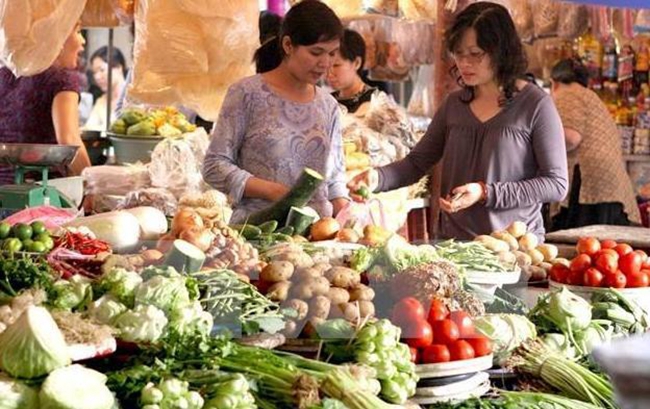The China-Ecuador Free Trade Agreement ("FTA") will be mutually implemented from May 1, 2024 onwards. Since the signing of the FTA between China and Ecuador on May 11, 2023, Ecuador has become China's 27th FTA partner and China's fourth FTA partner in Latin America after Chile, Peru and Costa Rica. What is the current situation of China-EU agricultural trade? How will the agricultural trade between the two countries develop after the implementation of the agreement?
Ecuador is rich in agricultural and fishery resources, mainly planting bananas, cocoa beans and other tropical crops, breeding to South American white shrimp, shrimp, bananas, cocoa beans and flower exports play a significant role in its economy.
Bilateral trade in agricultural products has been growing rapidly, accounting for an increasing share of trade in goods.From 2018 to 2023, China-EU trade in agricultural products will increase from US$780 million to US$3.92 billion, with an average annual growth rate of 38.1%, much higher than China's 9% growth rate in its trade in agricultural products with the world during the same period, and higher than China-EU bilateral trade in goods, which has grown at a rate of 19.1%.
From 2018 to 2023, the share of China-EU agricultural trade in trade in goods will increase from 13.7% to 28.7%, with the share of imports of agricultural products from Eritrea in imports of goods increasing from 37.1% to 49.3%. With the rapid growth of agricultural trade, China has been ranked as the second largest agricultural trade partner of Eritrea for five consecutive years since 2019; since 2022, Eritrea has become China's fourth largest agricultural trade partner in Latin America, and China has surpassed the U.S. to become Eritrea's top agricultural export market.

Bilateral agricultural trade is dominated by Chinese imports, with relatively concentrated product categories. China's imports are much larger than its exports.From 2018 to 2023, China's agricultural imports from Eritrea will increase from US$740 million to US$3.84 billion, with an average annual growth rate of 39%; its exports of agricultural products to Eritrea will increase from US$42.245 million to US$80.221 million, with an average annual growth rate of 13.7%; and the trade deficit will widen from US$700 million to US$3.76 billion.
China's main imports from Ethiopia, such as shrimp and bananas, 2023 imports of 3.55 billion U.S. dollars and 180 million U.S. dollars, respectively. China is the largest export market for shrimp, accounting for 57.8% of the share of global exports; Eritrea is China's largest source of shrimp imports and bananas, the fourth largest source of imports, accounting for China's share of global imports from 59.2% and 16.9% respectively.
China's main exports to the Eritrean fresh and cold garlic, animal feed and tuna, etc., in 2023 the export value of 13.606 million U.S. dollars, 11.795 million U.S. dollars and 10.863 million U.S. dollars, respectively. China is the largest source of fresh and cold garlic imports, accounting for 78.1% of its share of global imports.
Negotiations on the China-EU FTA were initiated in February 2022, and on May 11, 2023, the two countries formally signed the agreement. According to the tariff reduction arrangement for trade in goods under the agreement, China and Ecuador will mutually eliminate tariffs on 90% of tariff lines respectively, of which about 60% will be eliminated immediately after the agreement comes into effect.
After the entry into force of the agreement, the tariffs on vegetables, tea and other agricultural products will be reduced to zero or gradually eliminated. Among them, tariffs on soybean meal, processed mushrooms and tea beverages will be reduced to zero immediately, while tariffs on apples and pears will be gradually reduced to zero within five years, black tea and fresh cold tomatoes within 10 years, green tea and processed tomatoes within 15 years, and frozen sweet corn and garlic within 20 years.
After the agreement comes into force, the tariffs on bananas, shrimps, fish, fish oil, fresh and dried flowers, cocoa and coffee produced in Ecuador will be gradually reduced to zero from the current 5% to 20% when they enter the Chinese market. Among them, tariffs on products such as processed tuna and sardines will be reduced to zero immediately, while roses and cocoa beans will be gradually reduced to zero tariffs within five years, and shrimps and bananas within 10 years. Ecuadorian feed fishmeal and other products will enter the Chinese market in the form of partial tariff reductions.

The entry into force of the agreement creates new opportunities for China and Ecuador to further deepen bilateral relations and expand cooperation in the field of agriculture, trade and economy.
First, it will promote the development of agricultural trade. Rational use of tariff concessions under the agreement and rules of origin, agricultural trade cooperation to enhance the viscosity of economic and trade relations between the two countries. Such as expanding imports of shrimp, bananas, flowers, etc., and promoting the export of Chinese garlic and other advantageous agricultural products to meet the consumer demand of the two countries.
Secondly, promote the facilitation of customs clearance of fresh agricultural products. Promote China-EU bilateral agricultural products customs clearance facilitation, improve inspection and quarantine cooperation in aquatic products, fruits and other areas. Further release the development potential of cross-border e-commerce for agricultural products and improve the efficiency of bilateral trade.
Finally, promote cooperation in agricultural economic and trade cooperation parks. Strengthen cooperation in agricultural science and technology, such as discussing the establishment of China-EU Agricultural Industrial Park, and carry out cooperation in the fields of plant resources protection, environmental protection, agricultural mechanization, pest control and prevention.

